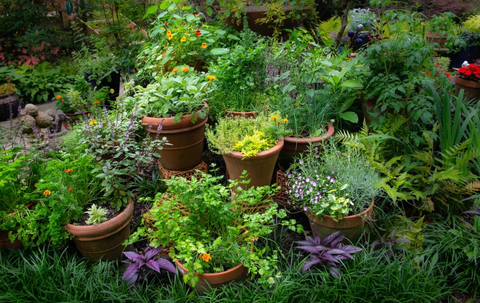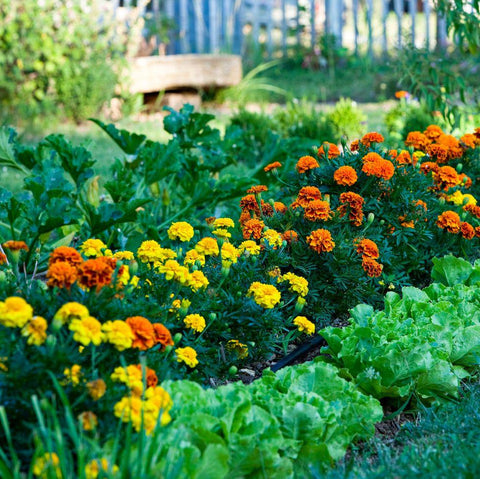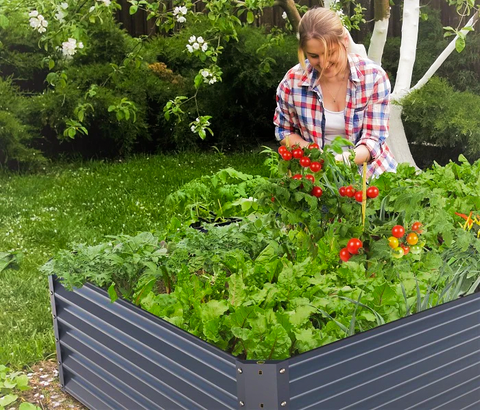When it comes to adding a vibrant burst of color to your garden, annual flowers are the go-to choice for many garden enthusiasts. These versatile plants provide an array of hues and textures that can transform any outdoor space into a breathtaking masterpiece. In this comprehensive guide, we'll explore the world of annual flowers, discussing their unique features, how to care for them, and providing a curated list of stunning annuals to turn your garden into a kaleidoscope of beauty.The following content also has some reference value for raised garden beds.

Introduction: The Magic of Annual Flowers
What Are Annual Flowers?
Annual flowers are plants that complete their life cycle—germination, growth, flowering, seed production, and death—within a single year. Unlike perennials, which return year after year, annuals need to be replanted each growing season. This characteristic allows gardeners to experiment with a variety of colors and species, transforming their garden's appearance annually.
Why Choose Annuals for Your Garden?
- Color Variety: Annuals offer a vast spectrum of colors and patterns, making it easy to create eye-catching displays.
- Seasonal Flexibility: You can switch up your garden's look every year, adapting to changing tastes or seasonal themes.
- Quick Impact: Annuals typically bloom sooner and longer than many perennials, providing immediate gratification.
- Container Gardening: They're ideal for containers and hanging baskets, allowing gardeners with limited space to enjoy vibrant blooms.
Selecting the Perfect Annuals
Considering Your Climate and Region
Before selecting annuals, consider your local climate and growing conditions. Some annuals thrive in cool weather, while others prefer the heat. Check with local nurseries or extension services for recommendations tailored to your region.
Matching Colors and Themes
Think about the color scheme and theme you want for your garden. Do you prefer a riot of bright, contrasting colors or a more subdued, harmonious palette? Choose annuals that fit your vision and complement your existing landscape.
Planning for Growth and Maintenance
Consider the height, spread, and growth habits of the annuals you choose. Some may be low-growing, ideal for borders or edging, while others can serve as dramatic focal points. Plan for their maintenance needs, including pruning, deadheading, and watering.
Planting and Caring for Annuals

Preparing Your Garden Bed
- Soil Preparation: Amend your soil with organic matter to improve drainage and fertility. Most annuals prefer well-drained soil.
- Sunlight Requirements: Ensure your chosen location receives the right amount of sunlight for your selected annuals. Some thrive in full sun, while others prefer partial shade.
Planting Annuals with Care
- Timing: Plant annuals after the last frost date in your area for spring and early summer bloomers. For fall annuals, plant in late summer to early fall.
- Spacing: Follow the spacing guidelines on the plant tags to prevent overcrowding, which can lead to disease and poor growth.
- Depth: Plant at the same depth as they were in their nursery pots, and water thoroughly after planting.
Watering, Feeding, and Mulching
- Watering: Keep the soil consistently moist but not waterlogged. Drip irrigation or soaker hoses can help provide even moisture.
- Feeding: Use a balanced, slow-release fertilizer or liquid fertilizer according to package instructions. Fertilize sparingly to avoid excessive growth.
- Mulching: Apply a layer of mulch to retain soil moisture, regulate temperature, and suppress weeds.
Dealing with Pests and Diseases
Monitor your annuals for signs of pests or diseases, and take appropriate action if needed. Organic remedies like neem oil or insecticidal soap can help control common garden pests, while proper spacing and good airflow can prevent diseases.
Top Annual Flowers for a Colorful Garden
Marigold (Tagetes spp.)
- Colors: Vibrant oranges and yellows.
- Height: Varies by variety.
- Sunlight: Full sun.
- Special Features: Deer-resistant, repels some garden pests.
Zinnia (Zinnia elegans)
- Colors: A wide spectrum, including pink, red, orange, yellow, and white.
- Height: Varies by variety, from dwarf to tall.
- Sunlight: Full sun.
- Special Features: Attracts pollinators like butterflies.
Petunia (Petunia spp.)
- Colors: Countless options, including purple, pink, red, white, and more.
- Height: Varies by variety.
- Sunlight: Full sun to partial shade.
- Special Features: Spiller variety suitable for hanging baskets and containers.
Cosmos (Cosmos bipinnatus)
- Colors: Pink, white, and shades of red.
- Height: Typically 2 to 4 feet.
- Sunlight: Full sun.
- Special Features: Excellent cut flowers, attract butterflies.
Sunflower (Helianthus annuus)

- Colors: Bright yellow to deep red-brown.
- Height: Varies by variety, some reaching 10 feet or more.
- Sunlight: Full sun.
- Special Features: Iconic flowers, edible seeds.
Geranium (Pelargonium spp.)
- Colors: Various shades of red, pink, and white.
- Height: Typically 1 to 2 feet.
- Sunlight: Full sun to partial shade.
- Special Features: Beautiful foliage, and fragrant leaves.
Nasturtium (Tropaeolum majus)
- Colors: Yellow, orange, and red.
- Height: Typically 6 to 12 inches.
- Sunlight: Full sun to partial shade.
- Special Features: Edible flowers and leaves, attract pollinators.
Impatiens (Impatiens walleriana)
- Colors: Wide range, including pink, red, purple, and white.
- Height: Typically 6 to 24 inches.
- Sunlight: Partial to full shade.
- Special Features: Ideal for shade gardens, prolific bloomers.
Sweet Alyssum (Lobularia maritima)
- Colors: White, purple, and pink.
- Height: 4 to 6 inches.
- Sunlight: Full sun to partial shade.
- Special Features: Fragrant flowers, excellent ground cover.
Snapdragon (Antirrhinum majus)
- Colors: Multiple shades, including pink, red, yellow, and orange.
- Height: Varies by variety.
- Sunlight: Full sun to partial shade.
- Special Features: Spiky, colorful blooms, excellent for cutting.
Planting Annuals for Continuous Color
Understanding Annual Life Cycles
Annuals typically bloom from spring or early summer until the first frost. However, understanding their life cycles can help you plan for continuous color. Some annuals, like marigolds, have a more extended bloom period than others.
Succession Planting
Planting new batches of annuals every few weeks can ensure a steady supply of fresh blooms throughout the growing season. This technique is particularly useful for varieties that may decline in the heat of summer.
Extending the Colorful Display
Some annuals, especially cool-season varieties like pansies, can continue to bloom well into fall or even winter, depending on your climate. Consider planting these to extend your garden's colorful display.

Conclusion: A Symphony of Color in Your Garden
With the right selection and care, annual flowers can transform your garden into a lively, ever-changing masterpiece. Whether you're a seasoned gardener or just starting, the beauty and versatility of annuals make them an excellent choice for adding color and charm to any outdoor space. So, roll up your sleeves, dig in the dirt, and watch your garden come alive in a symphony of colors only annual flowers can provide.









